
Bangladesh is blessed with huge inland open water resources with a wide range of variations in nature. We have numerous rivers canal, beels, lakes and vast area of floodplains. Altogether the area of this inland water is about 4.5 million hectors. From this, inland open water contains an area of 4.04 hectors including river, beel, canal, haor, baor etc.
Haors (bowl shaped depressions from the water level of rivers) of Bangladesh are enriched in biodiversity having great importance. Some haors of Bangladesh are nationally and internationally important for their plenteous beauty and pompous biodiversity.
The Hakaluki is particularly a good example for such type of water resources which has great ecological, economic and commercial values. It is one of t he Bangladesh largest and one of Asia’s larger wetland resource. The haor is spreaded over Kulaura, Juri and Baralekha upazilla under Moulovibazar district and Fenchuganj and Gopalganj upazillas under Sylhet district. The total area of this haor is about 39322.422 hectors or 97166.78 acres but at the rainy season its total area turns into 7000 hectors. Though the haor is surrounded by eleven union and five upazillas, 40% of its territory lies in Barolekha upazilla.
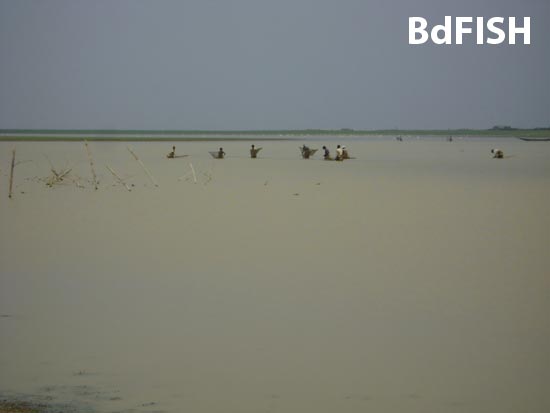
The haor itself comprises a complex web of Juri, Fanai and Continala rivers. There is about 276 beels cover an area of 4925.198 hectors in the dry season from which 80 interconnecting beels are located in Moulovibazar district.
The haor Hakaluki offers a very different type of ecosystem and haor basin supports a variety of aquatic habitat. It has also an appreciable amalgamation of rare vulnerable endangered of fishes or another animal or plant species. Having a wide variety or peculiarities of its flora and fauna, it performs a special role for maintaining the genetic and ecological diversity.
Fishes of 107 species were available in the haor but a report of IUCN in 2008 represent that only 75 species are remain today. Some tasty and nutritive SIS (Small Indigenous Species) fishes like Chela, Dhela, Pabda, Lal chanda are extinct from here. Various GOs and NGOs adopted lease basis extensive fish culture system in the haor. More than 200 acres area is leased by additional deputy commissioner of Moulovibazar district and less than 200 acres of area is leased by district fisheries officer. In every year the government escapes a huge amount of live fish fry of major carps in the haor for maintaining sustainable production from year after year. Fishermen use mainly Dhorma jal, Thela jal and Vesal jal for fishing.
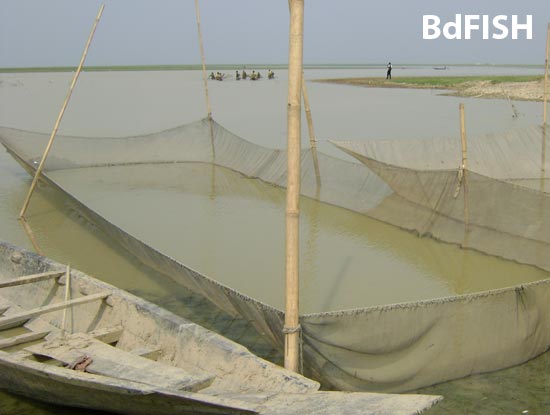
A large number of aquatic weeds present here that provide cover, shelter and shade of aquatic fauna. Singra, Makhna, Koroch, Dal etc. are found mostly as an aquatic plant.
This haor gets an excellent dimension in winter season by embellishing of migratory birds. In every winter a large number of guest birds of about 150 species from Siberian and other cold regions flock to the haors. This birds are Bright and Rose king duck, Pankouri, Pantamukhi, Nishir payra, Chokhachockhi, balihas, Bokal, Khorjona, Dahuk etc. About 1,26.800 migratory birds assemble there (The Daily Star, 28 January 2008).
However, Hakaluki is not only a source of enormous biodiversity but also a source of natural beauty. Especially in rainy season it takes youthful and significance looks and like as infinite water kingdom.
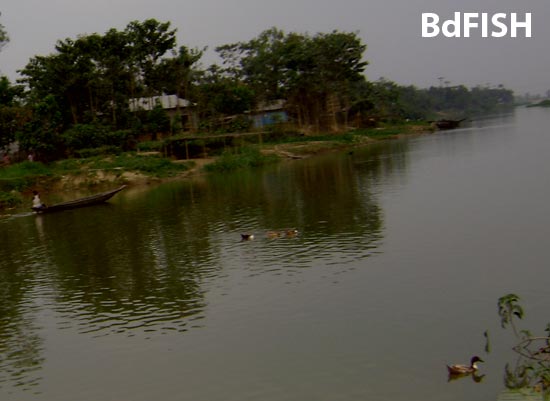
Though the Hakaluki is an assemblages of biodiversity, but nowadays it’s biodiversity is being declining. For this reason the Department of Environment (DoE) declared Hakaluki as ecologically critical area in 1999 and mentioned some problems. Such us-
- Indiscriminate use of resources
- Conversion of wetlands into rice fields
- Drying up haor beels for fishing
- Siltation
- Erection of embankment
- Over harvesting and use of offensive gear
- Destruction of aquatic plants by using them as firewood
- Population pressure etc.
In order to conserve and protect the biodiversity from destroying, government and various non government organizations have funded different projects and programmes. These projects and programmes can be unfolded here in below-
- Sustainable Environmental Management Programme (SEMP); Implemented by CNRS (Centre for Natural Resource Studies) for October 1995 to December 2005.
- The community Based Haor Resource management Project; Implemented by IUCN, Bangladesh and Supported by MoEF and UNDP.
- The Coastal and wetland Biodiversity Margaement Project (CBMP) Implemented by DoE in 2005.
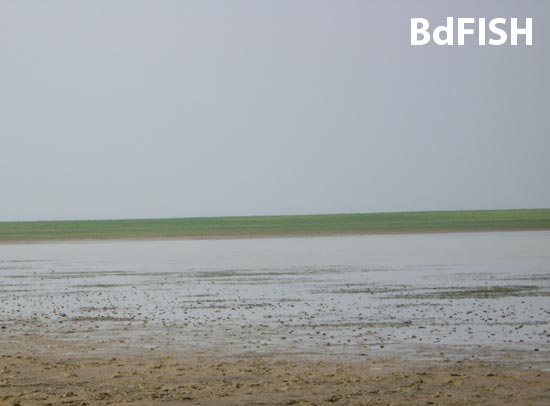
Hakaluki Haor: at a glance
| Located division | Sylhet |
| Located districts | Sylhet, Morelovibazar |
| Located upazilla’s | Fenchuganj, Gopalganj, Kulaura, Juri and Baralckha |
| Boundary | North- Gopalganj, South- Kulaura, East- Juri and Baralekha and West- Fenchuganj and some part of Kulaura |
| Surrounding union | 11 in number |
| Total area | 39-323.442 hectors or 97166.78 acres |
| Floodplain area | 70000 hectors |
| Beels | 276 in total number and 4925.198 hector in area |
| Rivers | Juri, Fani and continala |
| Fish species were | 107 |
| Extinct fish species | 32 |
| Fish species remain | 75 |
| Aquatic weed (Major) | Singra, Makhna, koroch, Hijal, Dal |
| Projects and programmes | EMP, CWBMP, CBHRMP |
At the last it can be said that, if proper and effective management steps should be taken and followed by government and NGO’s then it will be the exhaustive source for both biodiversity and beauty not only for Bangladesh but also for the whole world.
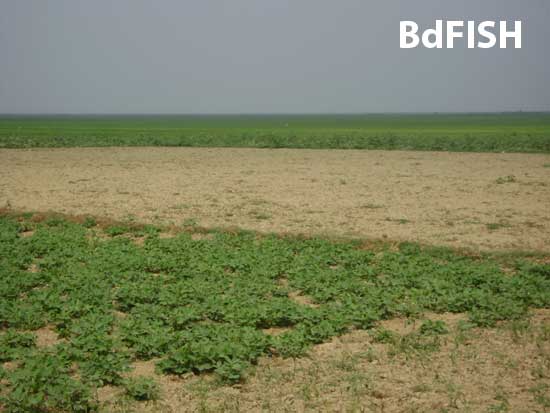
Reference :
- CWBMP, 2004. Plant biodiversity (coastal and wetland biodiversity management project). Department of Environment, Government of the People’s Republic of Bangladesh.
- DoF, 2009. Jatiyo Matshaw Saptaha Sangkalan-2009. Department of Fisheries, Bangladesh. 60.p.
- IWRB, 1992. International Waterfowl and Wetlands Research. Action Programme for the Conservation of Wetlands in South and West Asia. In: “Freshwater wetlands in Bangladesh: issues and approaches for management” (Nishat A, Hussain Z, Roy MK, Karim A eds). IUCN- The World Conservation Union, Switzerland, pp. 112-119.
- Khan MS, Haq E, Huq S, Rahman AA, Rashid SMA, Ahmed H, 2004. Wetlands of Bangladesh. Bangladesh Centre for Advanced Studies in associated with Nature Conservation Movement.
- MoEF, 2006. Coastal and wetland biodiversity management project document 2006. Ministry of Environment and Forests, Government of Bangladesh. Prepared & Submitted by: IUCN-Bangladesh. In association with Center for natural resource studies.
Acknowledgement:
Md. Shahidul Islam ( UFO, Juri, Moulovibazar) and haor adjacent villagers, who delivered me some valuable information about Hakaluki.
Visited 5,659 times, 1 visits today | Have any fisheries relevant question?
